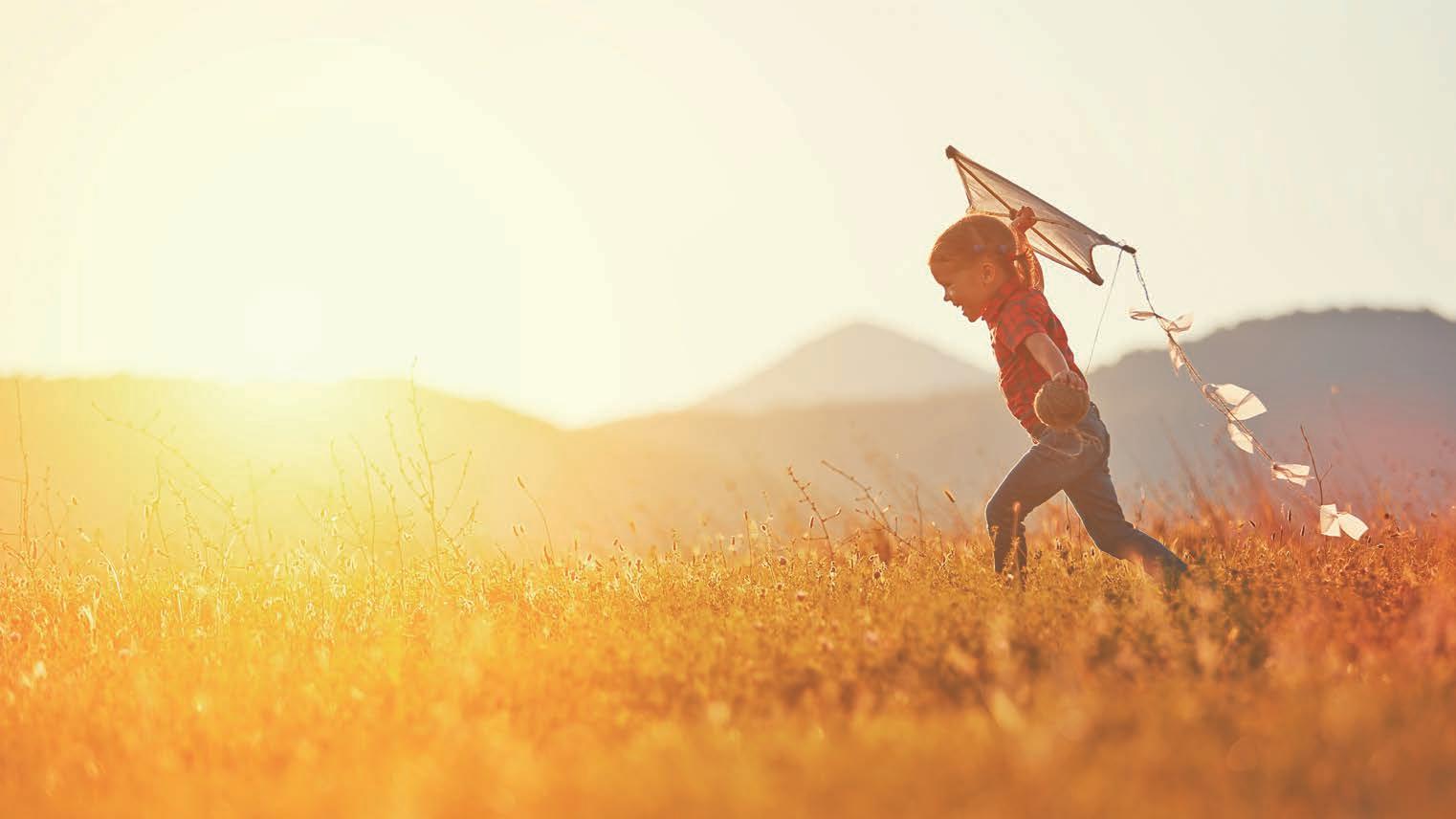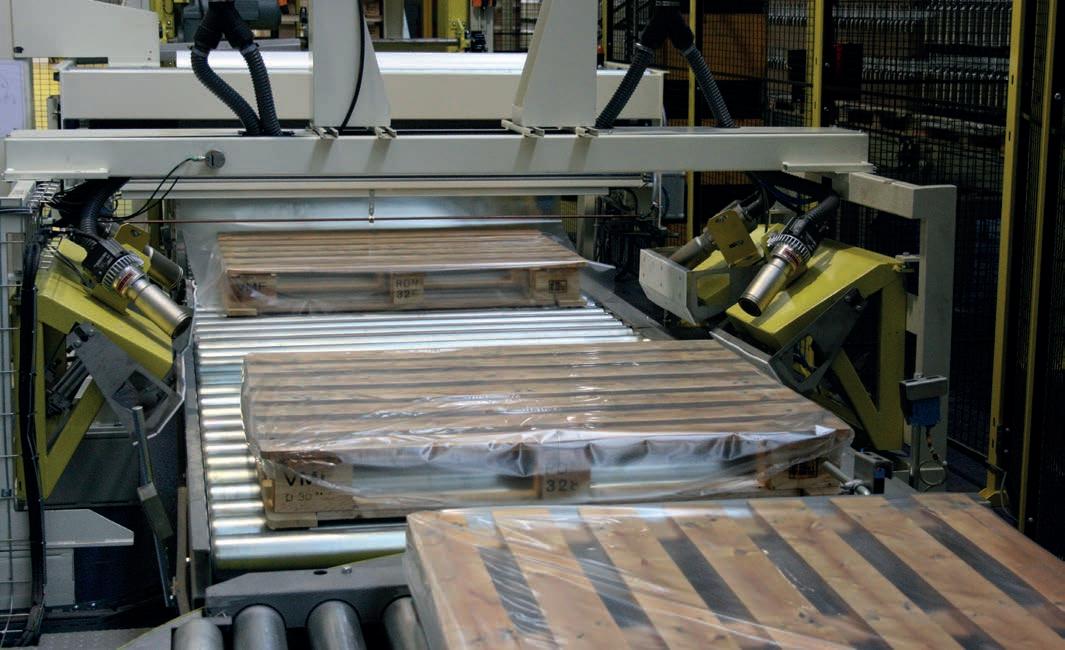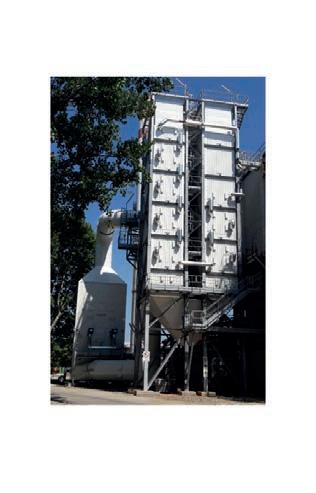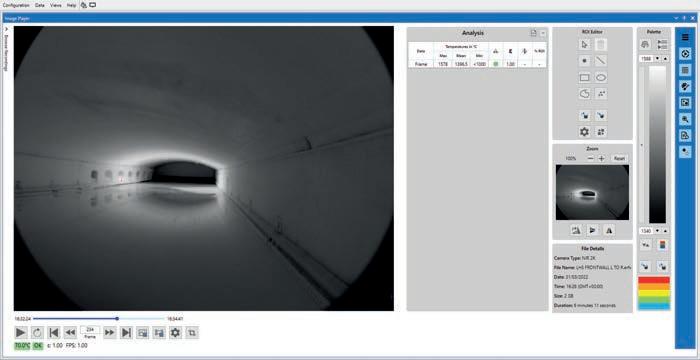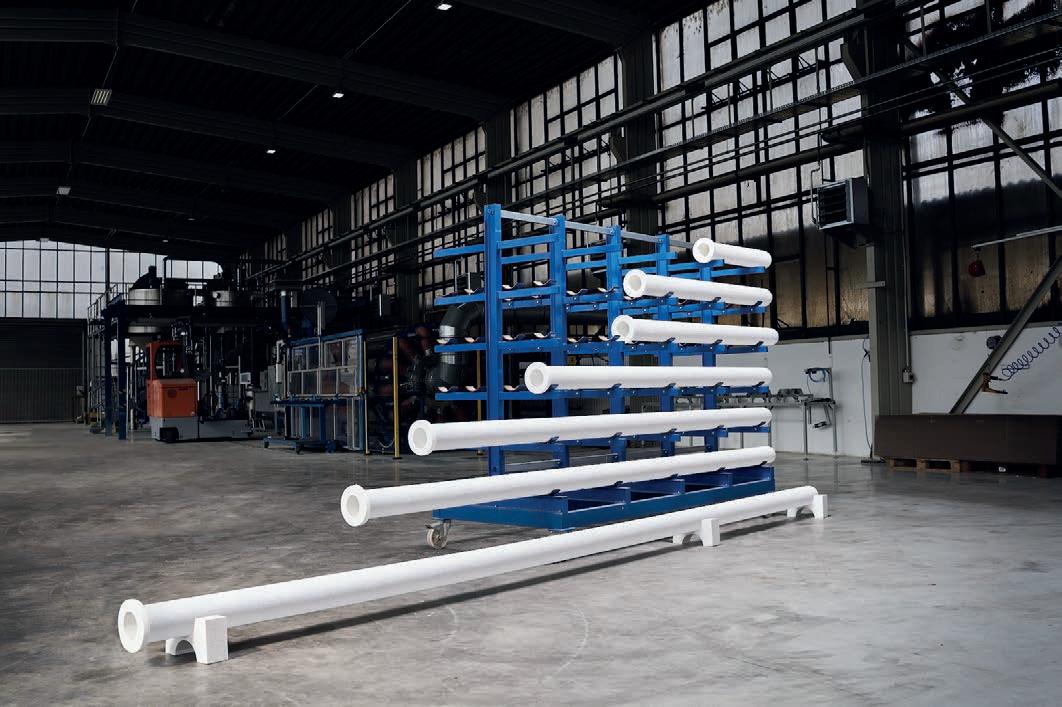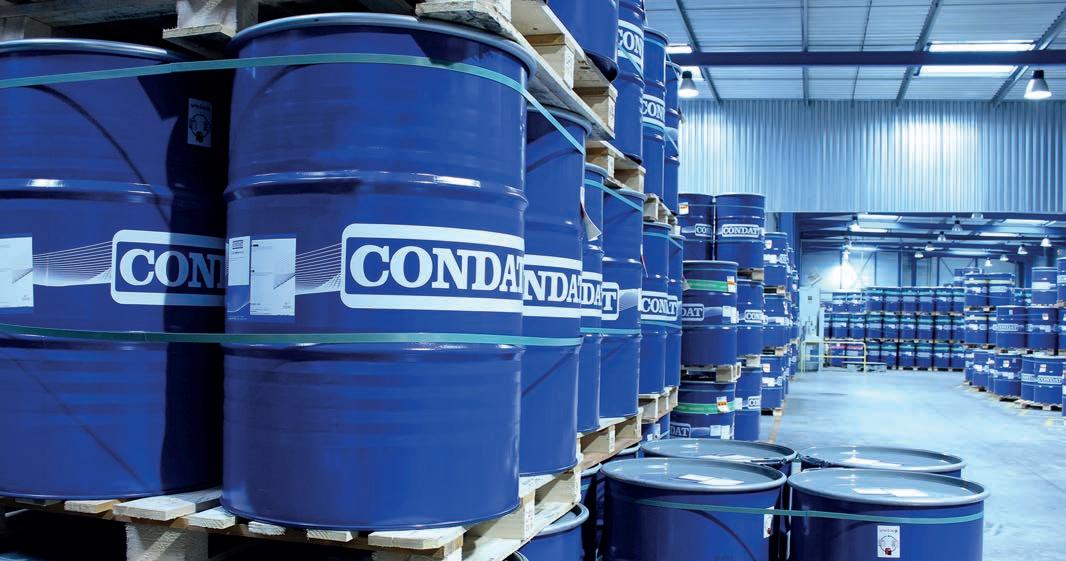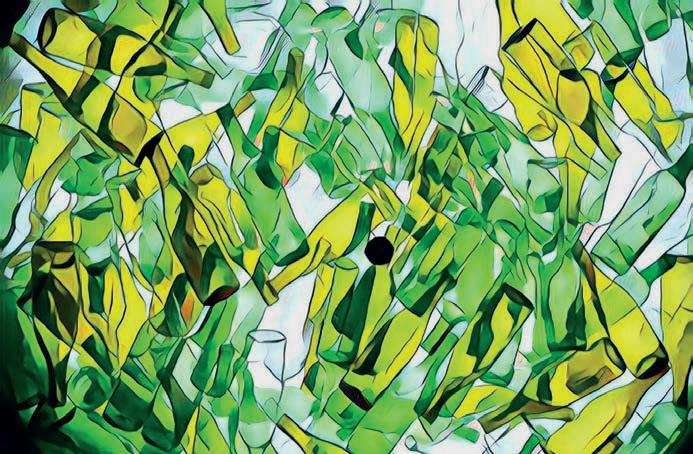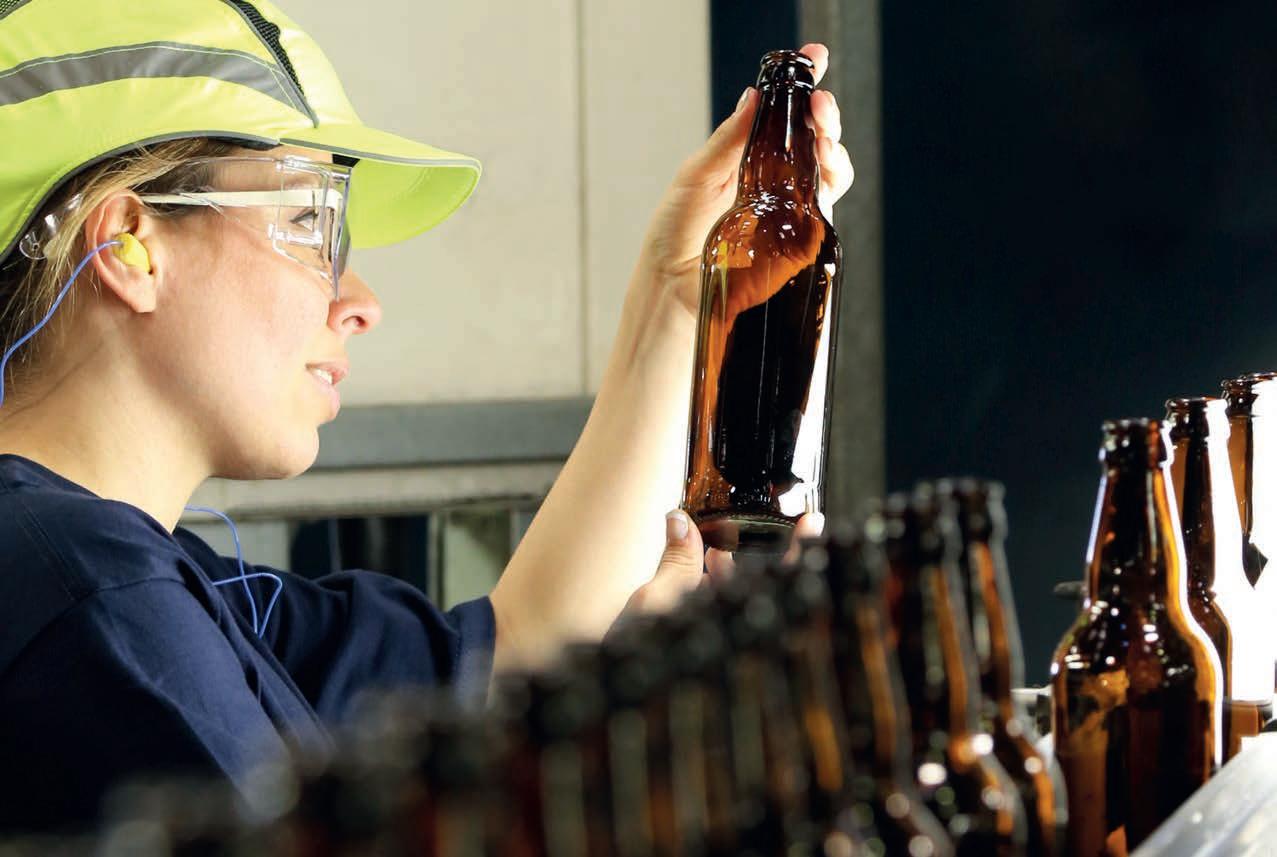
7 minute read
Recycling: FEVE
What will it take to close the recycling loop?
At the Sustainable Industrial Manufacturing Europe 2022 conference, Adeline Farrelly* shared how recycling is a key part of the glass industry’s decarbonisation pathway combined with making the energy transition.
Glass is healthy, reusable and infinitely recyclable, it is the hidden gem in a carbon neutral future, said Nature – the international journal of science.1 By addressing our biggest challenge – the CO2 footprint– the glass industry can offer a future-proof packaging that is healthy, circular and climate-neutral – one that can sustainably meet growing consumer demand.
We are living in a very difficult period with gloomy global warming forecasts, the war in Ukraine, the COVID crisis and the economic fallout from all this, the future has never felt more uncertain. Even in this uncertainty, people are more than ever demanding businesses and policy makers to ensure we foster a more sustainable world for the next generation. They are more attentive to the environmental challenges and demand that circularity and responsible production be high on the agenda and no longer empty buzzwords.
Glass meets this demand for true circularity: it is a permanent material that can be endlessly recycled in a closed bottle-to-bottle loop without loss of its intrinsic properties it is inert and always remains healthy and safe for food grade packaging no matter how many times it is recycled. It is the beating heart of an industry that is strategic for the EU economy because it services the essential EU food, beverage, and pharmaceutical sectors as well as cosmetics and perfumery in the EU market, but also for the export of high-end products across the world. And figures speak for themselves.
In 2021, the European production for the food and beverage sector increased by 5.0% in weight and 3.0% in unit terms, reaching its highest level ever recorded. More than 23.4 million tonnes or 83.3 billion bottles and jars were produced for the European and global market. Likely, in 2021 the production of flacons for the perfumery, cosmetics and pharmaceutical segments knew a strong growth by 2.2 % to reach 13.7 billion units.2
According to 2019 figures, the sector exports around €1.2 billion (empty bottles and jars) and enables extra EU exports of around €250 billion if you take into account filled products. More than 125,000 people work in the glass packaging value chain across Europe, guaranteeing a resilient local supply chain. On average, more than 70% of raw materials used in container glass production travel less than 300 km prior to being used in a glass furnace. Likewise, glass plants deliver more than 50% of their products within 300km. Every year €610 million is invested in upgrading plants for better energy efficiency and reduced CO2 emissions (i.e. a significant 10% of the operational and maintenance costs).
However, producing glass requires a lot of energy and if produced with fossil-fuels such as gas, CO2 emissions are produced. The industry has been constantly working to make glass production more energyefficient and less pollutant, and it has made major steps forward by increasing
the quantity of recycled glass in the batch and innovating the production technology. But this is not enough. As an important economic powerhouse of the EU economy, we’re committed to the UN 2030 Sustainable Development Goals (SDGs), and by 2050 we want to achieve a major revolution, starting now, in the way we produce glass that is fit for a circular and climate-neutral economy. This will secure the future of the sector and the jobs that depend on the industry within important value chains.
To help secure the future of the European glass industry in a circular and climate-neutral European economy, many ‘disruptive’ paths for decarbonising the production process are needed, as technologies and systems are not yet commercially available. Transitioning to climate-neutral production requires huge capital and operational expenditure public sector support and funding is therefore important to helping industries to deploy the new, disruptive technologies to be on track to meet the decarbonisation targets set by the Paris Climate Agreement and the EU climate law: measures under discussion aim for more than a 60% CO2 reduction by 2030 compared to 2005 and net carbon neutrality by 2050.
We have a twofold CO2 reduction strategy: addressing the 80% of CO2emissions through an energy transition for melting technologies and addressing the remaining 20% through closing the glass loop to recycle more, enabling more recycled glass cullet to be used in place of virgin raw materials, to make our circular economy work better.
Energy transition and melting technologies
To address the first pillar, in the last two years the European container glass industry jointly worked on the ‘Furnace for the Future’ project to get a grant from the EU Innovation Fund, but it didn’t succeed. However, in its initial phase it has allowed the industry to design a breakthrough technology to massively reduce CO2 emissions from container large-scale glass furnaces by replacing natural gas with up to 80% renewable electricity.
Based on the know-how the industry has acquired by preparing the application, glass manufacturing companies continue today individually to invest in designing the breakthrough technology and the scaling up of electric melting on a commercial scale.
When created, these hybrid electric furnaces will overcome existing technological barriers, and will be capable of melting reduced (amber) glass, as well as flint and green glass, together with high levels of recycled glass. With this new hybrid technology, the industry will be able to cut 50% of current CO2 emissions from our factories.
These more efficient “Furnaces for the Future” are already on the horizon, with cleaner energy, improved hybrid technology and more use of recycled glass than ever before. Combined with other innovations and sustainability initiatives, these new technologies will reduce carbon emissions from glass production significantly. Our industry continues to invest in improving existing technologies and exploring other solutions (biomass, hydrogen etc.) and at company level there are many more sustainability initiatives. Here below just some examples: � Encirc has worked with Glass Futures and have pioneered the use of biofuel during a test production on one of Encirc’s furnaces. � Wiegand-Glas announced the production of the new Eco2Bottle, a wine bottle made of guaranteed 93% recycled glass and with climate-neutral electricity from 100% hydropower. � O-I and Dalkia, a company that specialises in energy solutions, have joined forces to recover heat for the neighbourhood’s homes, through a district heating network. � Ardagh implemented a Tesla Battery Storage System in Irvine, Scotland. � The Federal Association of the German Glass Industry (BV Glas) is partnering with the GWI institute in Essen to research hydrogen as a substitute for fossil fuels in the glass production process and has received funding from IN4climate. � Saverglass and Verescence are industrial partners in VERCANE, the consortium formed by ENGIE, Fives, Saverglass and Verescence to study different carbon-neutral energy systems that could be compatible with the glass melting process: hydrogen, bioresources and process electrification. � Verallia is investing in electric furnaces at its site in Cognac as it strives to meet its ambitious CO2 reduction targets. The furnaces are set to come on-stream in 2023-2024 and will produce extra-flint glass for wines and spirits.
Closing the glass recycling loop
come from the melting of virgin raw materials in the furnace. But if replaced with recycled glass (cullet) these emissions are eliminated. Every tonne of recycled glass saves 1.2 tonnes of virgin raw materials, with a 3% energy reduction for each 10% of glass recycled in the furnace and a 5% reduction of greenhouse gas emissions.
Glass is Europe’s most recycled, closed loop food and beverage packaging material – latest figures put the collection rate at 80%.3 Most recycled glass ends up back in the production loop: the average batch mix contains 52% recycled content. However, while 80% of glass put on the market is collected, 20% is not. To close the loop, glass depends on a whole system of stakeholders working together to collect more and better-quality glass for recycling.
The container glass sector initiated Close the Glass Loop – a multi-stakeholder platform to unite the glass collection and recycling value chain, and to establish a material stewardship programme that will result in more bottle-to-bottle recycling. Our aim is to have people recycling more and better. This platform brings together local authorities, cities, brands, recyclers, extended producer responsibility schemes and producers to achieve a 90% collection for recycling target by 2030. Close the Glass Loop action plans are being developed at EU level and in several countries - see www.closetheglassloop.eu
The industry is committed to enabling the transition to a resourceefficient and low-carbon economy and ensuring the long-term sustainability of manufacturing. By doing so, the industry will ensure actions and business goals are in line with global commitments to the UN 2030 Sustainable Development Goals. In fact, the UN has made 2022 the International ear of glass a perfect opportunity to show how glass in all its applications can contribute to achieving these Sustainability Goals and glass packaging with its project to be climate neutral and fully circular is a key part in achieving these aims. �
*Secretary General of the European Container Glass Federation (FEVE), Brussels, Belgium, www.feve.org
(1) https://www.nature.com/articles/ d41586-021-02992-8 (2) https://feve.org/year2021production (3) https://closetheglassloop.eu/europesglass-value-chain-reaches-major-milestone/
